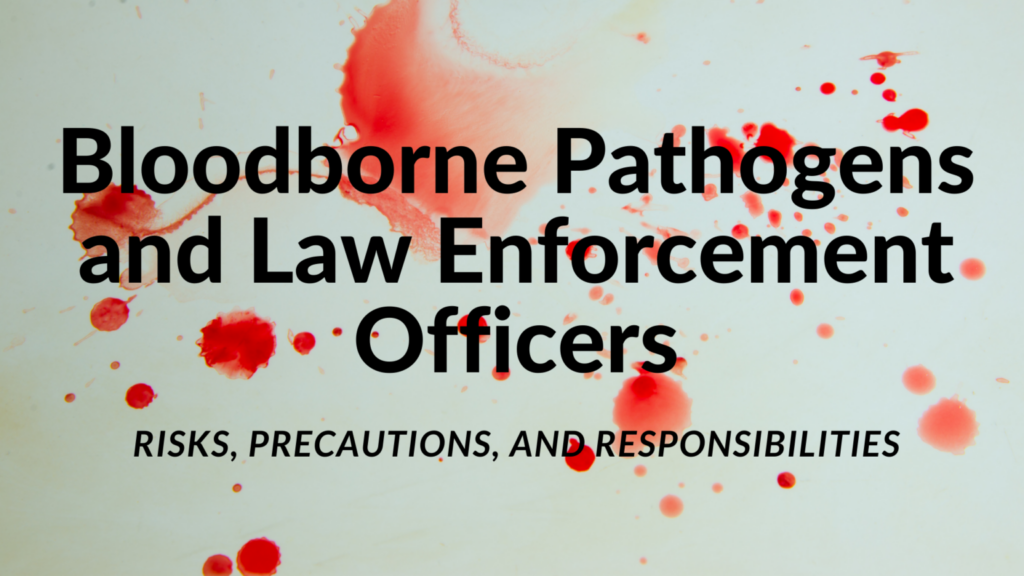This is a general course on Bloodborne Pathogens and Law Enforcement Officers. You are expected to follow your agency’s policies. This course is provided for educational purposes on this general topic of safety.

Overview
This script explores the occupational hazards law enforcement officers face regarding bloodborne pathogens. It delves into the risks of exposure in various scenarios, emphasizing the potentially life-threatening consequences of diseases like HIV, hepatitis B, and hepatitis C. The importance of preventive measures and OSHA’s guidelines are highlighted, stressing the need for comprehensive safety protocols, personal protective equipment (PPE), and vaccination programs. The responsibilities of both law enforcement officers and agencies are discussed, stressing the role of training and a supportive working environment. OSHA’s Bloodborne Pathogens Standard and 20 tailored preventive tips for police officers are outlined to mitigate exposure risks further. The script concludes by underscoring the significance of prioritizing safety and fulfilling responsibilities to create a safer working environment for law enforcement officers and the communities they serve.
Learning Objectives:
- Understanding Bloodborne Pathogens: Gain knowledge about bloodborne pathogens, including HIV, hepatitis B, and hepatitis C, their sources, and potential health risks associated with exposure.
- Risk Scenarios for Law Enforcement: Identify various scenarios in law enforcement work that pose a risk of exposure to bloodborne pathogens, such as administering first aid, dealing with violent individuals, and investigating crime scenes.
- Preventive Measures and OSHA Guidelines: Familiarize yourself with the Occupational Safety and Health Administration’s (OSHA) guidelines, including the Exposure Control Plan, training requirements, personal protective equipment (PPE) provision, hepatitis B vaccination, and post-exposure evaluation and follow-up.
- Responsibilities of Law Enforcement Officers and Agencies: Understand the responsibilities of law enforcement officers in prioritizing their safety, staying informed about preventive measures, and promptly reporting exposure incidents. Recognize the role of agencies in providing necessary tools, training, and support.
- Preventive Tips for Police Officers: Learn practical preventative tips tailored to minimize the risk of exposure to bloodborne pathogens, including properly using PPE, infection control practices, and adherence to exposure control plans and protocols.
